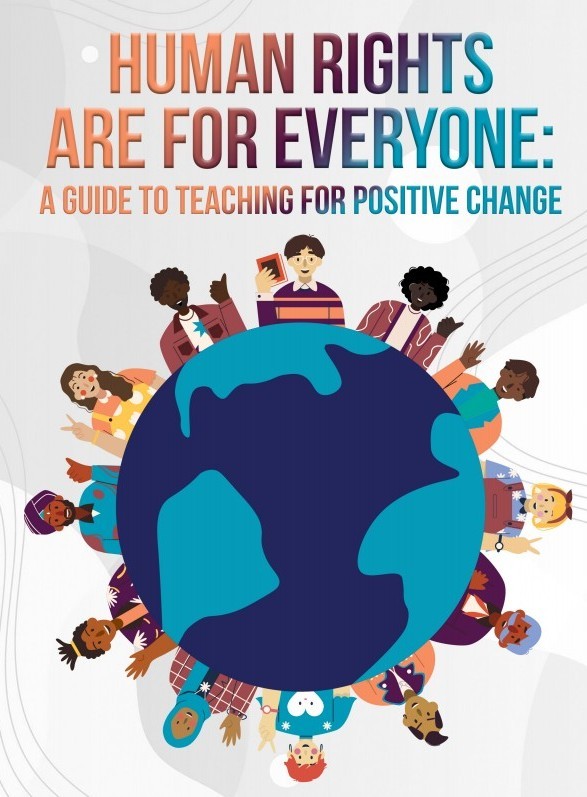Resources
Topic
One of the many goals of Human Rights Education is to give learners a sense of global connectedness and interdependence
Download Full Book Alignment Guide
HUMAN RIGHTS ARE FOR EVERYONE: A guide to teaching a positive change

Dear Educators!
Encouraging engagement and activism is an important goal of HRE. Students learn about the foundations of human rights in order to defend and protect these rights for themselves and others. Providing opportunities for learners to identify with issues and movements they care about and to identify actions they can take to make their voice heard is an important element of Human Rights Education.
This manual and training provides educators with the resources and information to teach about, though, and for human rights. We begin with lessons that offer context and a brief history of human rights. The following 12 sessions cover the UDHR and its 30 articles. Students will learn more about the rights enshrined in the UDHR and then apply these concepts to real historical and current events around the globe. The goal is for students to learn about human rights and to learn ways to advocate for themselves and for those whose rights have been violated. Using critical thinking, reading analysis, and the methods of HRE, the manual aims to give educators a unique way to bring this important topic to life.
Human Rights Education is not only about the content we teach but is also about using the values of HRE to create a more equitable, student-centered classroom where learners work together to determine the path of their learning. Putting the values of Human Rights Education into practice in your classroom and curriculum is an important aspect of this work. This includes providing opportunities for cooperative work and student-centered and student-led learning. By mirroring the values of HRE in the ways we teach, we model and uphold these values in both principle and action.
Each of the manual’s lessons work together to create a rich picture of human rights, but individual lessons may also be used on their own. One of the goals is to offer flexibility and creativity to put together a program that will meet the needs of your participants. The activities and lessons can be tailored for different settings, audiences, and levels of understanding. The order of the lessons and the timing of the activities are only suggestions; facilitators are encouraged to adapt these resources to best engage and inspire the learners they are working with. The lessons have suggested times but should be adapted to meet the needs of the participants.
In addition to engaging activities which encourage discussion and critical thinking about human rights, each lesson includes a practical action that participants can take to make change in their communities.
Thanks.
Hope of Family


